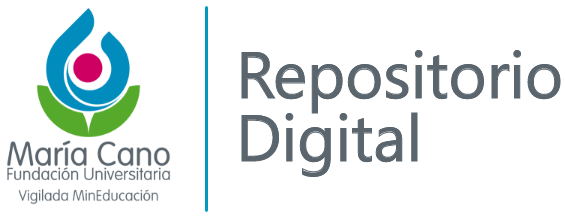| dc.rights.license | Atribución-NoComercial-SinDerivadas 4.0 Internacional (CC BY-NC-ND 4.0) | spa |
| dc.contributor.advisor | Guevara Barbosa, Nidia Edila | spa |
| dc.contributor.author | Bedoya Galeano, Ana María | spa |
| dc.contributor.author | Jiménez Londoño, María Camila | spa |
| dc.contributor.author | Rojas Hernández, Paula Andrea | spa |
| dc.date.accessioned | 2022-08-01T21:51:22Z | |
| dc.date.available | 2022-08-01T21:51:22Z | |
| dc.date.issued | 2016 | spa |
| dc.identifier.uri | https://repositorio.fumc.edu.co/handle/fumc/377 | |
| dc.description.abstract | La salud ocupacional a lo largo de la historia se ha visto reflejada desde la época primitiva, hasta nuestros días, a través de las diferentes formas de protección y autocuidado que empíricamente se aplicaba desde la era del homo-sapiens con la creación de herramientas de supervivencia para conseguir alimento y protegerse a sí mismo y a su manada de los peligros del ambiente hostil que lo rodeaba; con la aparición de las primeras enfermedades ocupacionales en la edad antigua, los reyes y faraones se hicieron de códigos y mandatos que buscaron proteger a los trabajadores; en la edad media, se dieron a conocer los primeros elementos de protección personal y las primeras medidas preventivas en relación al riesgo ocupacional; hasta la edad moderna donde se consolida la preocupación por el bienestar del trabajador, pues es aquí donde la relación máquina – hombre, sugiere la implementación de acciones más estrictas para proteger al empleado de accidentes durante el desarrollo de sus actividades. Fue de esta manera como con el trascurso del tiempo y la entrada en vigencia de la normatividad en Salud Ocupacional las empresas se han visto en la preocupación por generar ambientes de trabajo, que procuren el bienestar físico, social y mental del trabajador. | spa |
| dc.description.abstract | Occupational health over the history has been reflected since the primitive period until nowadays, through the different ways of protection and self-care that they empirically applied, since the Homo-Sapiens period, with the creation of survival tools to gain food and protect himself and his herd against the dangers of the hostile environment around them. With the appearance of the first occupational diseases in the Antiquity, kings and pharaohs made codes and mandates in order to protect their workers. In the Middle Ages, came up the first personal protection elements and preventive measures in relation to occupational risk. Until the Modern Age was where the concern for the welfare of the worker was consolidated, it was there where the human-machine relationship suggested the implementation of stricter actions to protect the employee from accidents during the development of his or her activities. To sum up, it was in this way that with the course of time and the entry into force of the normativity in Occupational Health, companies have been in the concern to generate good work environments which provide physical, social, and mental well being of their workers. The IPS FISINOVA S.A.S from the regulations of the Occupational Health and Safety Management System, establishes the industrial hygiene program with the purpose of let the employees know the types of risk which they are exposed according to the activities that them do, making a control at the source in order to avoid occupational accidents, occupational diseases, establishing policies of preventive medicine and work, and hygiene and safety industrial. | en |
| dc.format.extent | 9 p. | spa |
| dc.format.mimetype | application/pdf | spa |
| dc.language.iso | spa | spa |
| dc.publisher | Fundación Universitaria María Cano | spa |
| dc.rights | Derechos Reservados - Fundación Universitaria María Cano, 2016 | spa |
| dc.rights.uri | https://creativecommons.org/licenses/by-nc-nd/4.0/ | spa |
| dc.title | Aplicación de la metodología REBA en los trabajadores que laboran el área de servicios generales de la IPS FISINOVA sede (Bolivia) en el año 2016 | spa |
| dc.type | Trabajo de grado - Pregrado | spa |
| dc.type.version | info:eu-repo/semantics/publishedVersion | spa |
| dc.type.coarversion | http://purl.org/coar/version/c_ab4af688f83e57aa | spa |
| dc.rights.coar | http://purl.org/coar/access_right/c_abf2 | spa |
| dc.description.degreelevel | Pregrado | spa |
| dc.description.degreename | Fisioterapeuta | spa |
| dc.description.program | Fisioterapia | spa |
| dc.identifier.instname | instname:Fundación Universitaria María Cano | spa |
| dc.identifier.reponame | reponame:Repositorio Fundación Universitaria María Cano | spa |
| dc.identifier.repourl | repourl:https://dspace-fumc.metabuscador.org | spa |
| dc.publisher.faculty | Facultad de Ciencias de la Salud | spa |
| dc.publisher.place | Medellín | spa |
| dc.rights.accessrights | info:eu-repo/semantics/openAccess | spa |
| dc.subject.proposal | Salud ocupacional | spa |
| dc.subject.proposal | Higiene industrial | spa |
| dc.subject.proposal | Prevención de la enfermedad | spa |
| dc.subject.proposal | Promoción de la salud | spa |
| dc.subject.proposal | Occupational health | en |
| dc.subject.proposal | Disease prevention | en |
| dc.subject.proposal | Health promotion | en |
| dc.type.coar | http://purl.org/coar/resource_type/c_7a1f | spa |
| dc.type.content | Text | spa |
| dc.type.driver | info:eu-repo/semantics/bachelorThesis | spa |
| dc.type.redcol | http://purl.org/redcol/resource_type/TP | spa |


